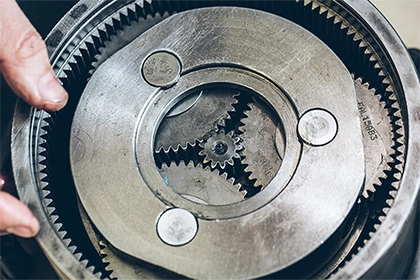
5 Factors Affecting Motor Efficiency
When we use an electric motor, we all want it to run efficiently. Do you know what are the factors that affect the efficiency of the motor?
The production and operation of many industries are inseparable from the use of motors, which can drive many machines and ensure the smooth operation of these machines. When we use a motor, we usually hope that it can run at the highest working efficiency. Do you know what factors affect the working efficiency of the motor?
1. Motor failure
No matter what kind of fault occurs in the motor, it will affect the efficient operation of the motor. The most common reason of motor failure is low resistance. If the insulation of the winding is overheated or physically worn, it is easy to cause the winding to fail. Small faults may cause the motor to run noisy, and the temperature rises too fast to cause overheating, while major faults may cause shutdown and bring huge losses to production. In order to reduce the probability of motor failure and reduce production losses, regular maintenance of the motor is necessary. Regular daily maintenance can effectively reduce motor failures, ensure efficient operation of the motor, prolong the service life of the motor, and reduce maintenance and replacement costs.
2. Motor size
The size of the Lunyee Motor also affects the production efficiency of the motor. When the size of the motor increases, the magnetic core flux and magnetic load of the motor will also increase accordingly, so that the working efficiency of the motor will be improved. This is why most industrial motors are large and heavy.
3. Motor loss
Motor losses also affect the efficiency of the motor. Motor loss mainly includes electronic rotor loss, iron loss, etc. Among them, the loss of the stator is the main cause of the loss of the motor. Generally speaking, we can reduce the loss of the stator and rotor by reducing the stator resistance, shortening the length of the winding end, increasing the slot fullness rate, and increasing the cross-sectional area of the conductor. You can also use high-quality low-loss silicon steel sheets to reduce the eddy current loss of the motor, or use better insulating materials to ensure the surface insulation of the silicon steel sheets and reduce losses.
4. Voltage too high or too low
Each motor has its own rated voltage. If the voltage is too low, the motor cannot reach the optimal operating voltage, which will cause the motor's torque and speed to drop, while the coil current increases, causing the motor to heat up. As a result, the motor's working efficiency gets down. If the voltage is too high, the motor will also experience abnormal heating, and the speed will increase at the same time. Continued operation of the motor in this state may cause damage to the internal components of the motor, causing the motor to malfunction. Installing an effective overcurrent protection can effectively protect the motor and reduce the failure of the motor due to voltage. The use of a gearbox can also effectively maintain the motor and save energy.
5. Motor working temperature
In many cases, once the motor overheats, it will cause the insulation of the motor to fail, reducing its service life and reducing the working efficiency of the motor. Therefore, ensuring that the working environment of the motor is kept cool is significant to prevent the motor from malfunctioning and improve the working efficiency of the motor.
Conclusion
Motor failure, motor size, motor losses and motor voltage and operating temperature can affect the efficiency of the motor. If you want the motor to work efficiently in a high performance state for a long time, you need to maintain the motor regularly, reduce the working temperature of the motor, reduce the loss, and choose a large size motor according to your usage.



Leave a Comment